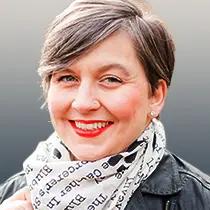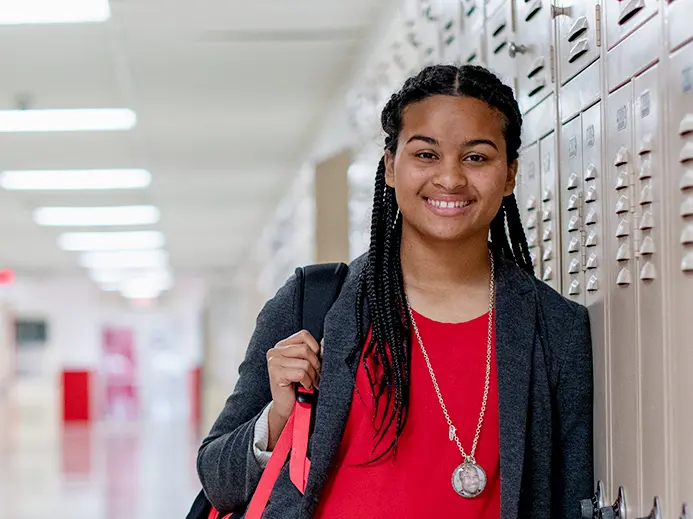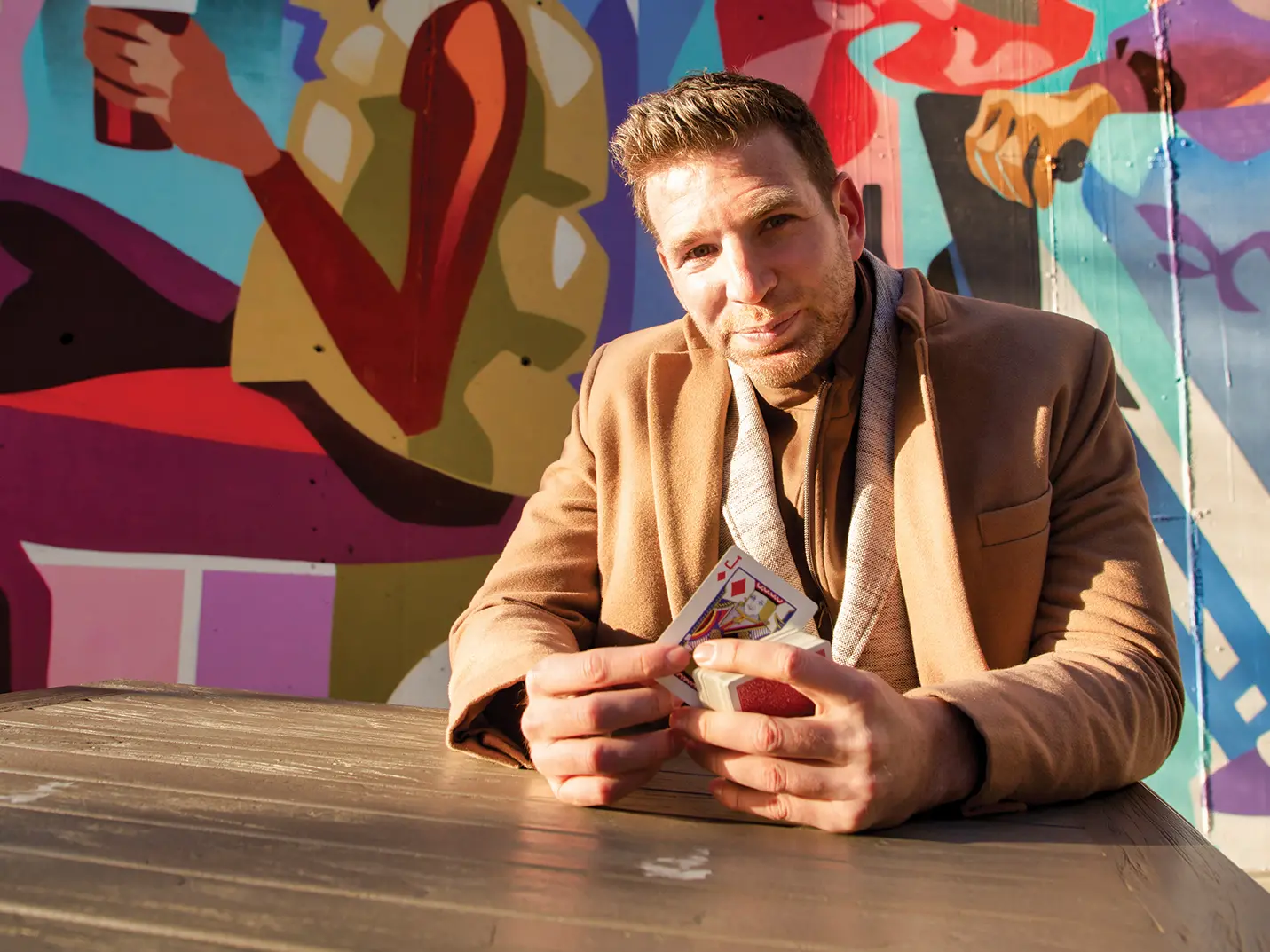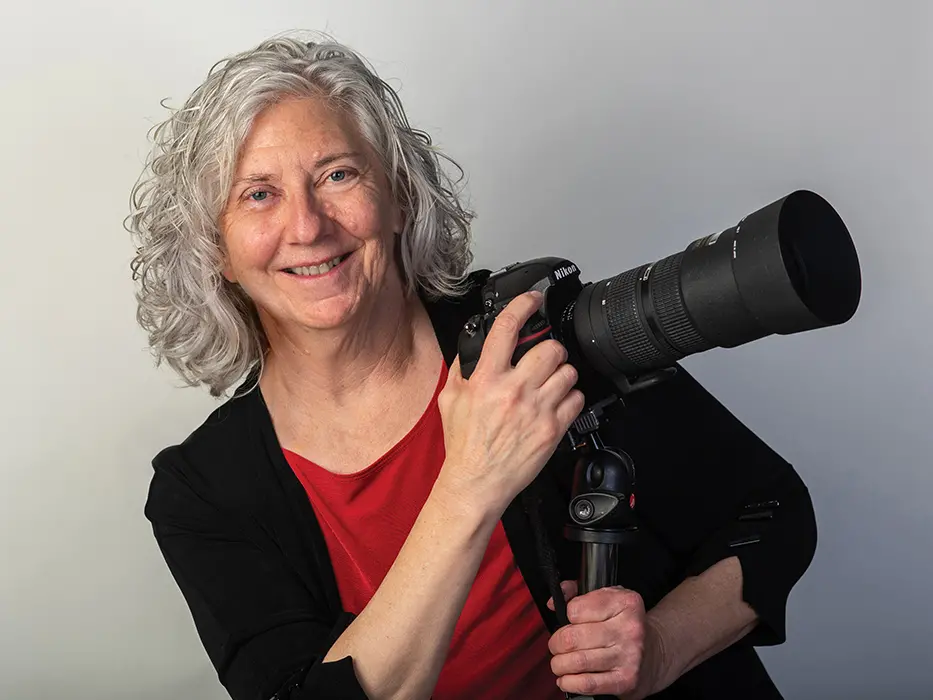Jeopardy’s Matt Amodio: A challenge seeker by nature
This two-time alumnus held the nation’s attention for 39-straight episodes of “Jeopardy!” and then shared some insights with us. (Answer: Who is Matt Amodio?)
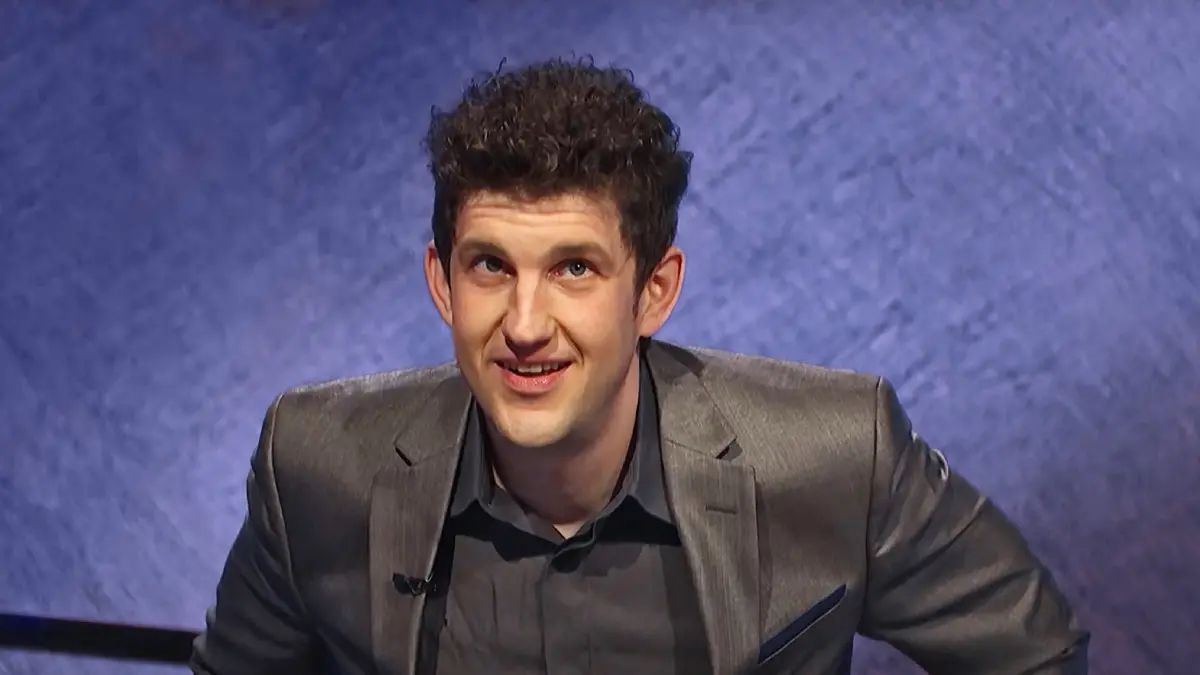
Matt Amodio on the set of Jeopardy. (Courtesy of Sony Pictures Television)
Is it coincidence that Matt Amodio ’12, ’13 MAS is both a two-time alum of Ohio State and a history-making “Jeopardy!” contestant? As he would have answered on the show, “What’s nope.”
Amodio’s 38-game winning streak came to a bittersweet end in October, but his awestruck grins and aw-shucks charm have won him fame and, yes, $1.5 million-plus.
Part of his strategy was beginning all of his answers with “what’s” instead of choosing a pronoun that matched the clue. It’s within the “Jeopardy!” rules, and it’s one less thing he had to think about when giving an answer under pressure.
Smart thinking, which obviously comes naturally to this Buckeye.
In hindsight, Amodio sees he had been training for his appearance on “Jeopardy!” just about his entire life. His family watched the show together while he was growing up in Medina, near Cleveland. And he’s had a lifelong approach to hobbies that puts the term “deep dive” in perspective.
Take, for example, baseball. Amodio played it in high school, and he played softball while at Ohio State. But playing wasn’t exactly enough. Amodio needed to go deeper.
“So I’m analyzing the right pitch to throw in this situation and the percentages on how to organize your fielders,” he says. “That’s just how I enjoy something, by analyzing how to do it the best you possibly can.”
That’s an inclination Amodio honed at Ohio State, where he earned a Bachelor of Science in Actuarial Science in 2012 and followed up with a Master of Science in Applied Statistics in 2013. From Columbus, he went to the University of Wisconsin, earning another master’s degree in 2015, this time in artificial intelligence.
Now a doctoral candidate at Yale University studying artificial intelligence, Amodio won 38-straight “Jeopardy!” games, the second-longest winning streak in history, in episodes that started airing in July 2021. He’ll likely appear again on the show’s Tournament of Champions in 2022.
We spoke to Amodio after the dust had settled a bit and he was no longer shuttling back and forth between Connecticut and LA. He was focusing on the home stretch of his doctoral research and planning to lend his new star power to the “Game Theory $1,000,000 Challenge” fundraiser for St. Jude Children’s Research Hospital on Nov. 30.
-
People think of “Jeopardy!” as being a trivia game, about trivial facts. What do you think?
When I’m learning them, they don’t feel like trivia. I think it’s important to know how the world works, so I study history. Because I really want to know. People always reference history, and I say to myself, is that true? Were people really taller or shorter after the Middle Ages? When I’m doing it, it’s answering questions that feel important in the moment.
-
You’re doing important work right now, too. How do you describe what you do?
I build new neural network models. They’re a type of mathematical model. I take biological data from samples of patients, analyze their genes and build new neural network models with high-dimensional data. Neural networks were inspired by how the brain works, but in the end, they’re just a complicated math operation.
For my dissertation, I’m writing about a particular class of neural network model called a generative adversarial network. What we try to do is build a mathematical model that replicates a given set of data. That might not sound useful — why would we need to replicate it if we have a model? But we can perform hypotheticals: Instead of this person having a lot of B cells in their sample, what if we could make it with fewer B cells? We can answer these hypotheticals by plugging them into a model rather than needing to design an experiment.
My advisor is in the genetics department, so almost all my research is tied toward understanding biology better. The math problems are very fun to work with, and then I collaborate with people on the medical side who tell me if what I did was useful or not.
-
How did you choose Ohio State?
I’m from Medina, so I knew about Columbus, and I liked it a lot. I’ll admit it’s not very romantic, but I did well in high school and got financial aid for being valedictorian and a National Merit Scholar. Choosing where to go, I wanted to make sure I would be challenged. My Ohio State accelerated calculus program is still, to this day, the hardest class I’ve ever taken. I met some of my best friends in the math program.
-
Ohio State is, by the numbers, a huge place. But it also can feel personal and tightknit.
I found it very intimidating at first. I felt that bigness. But as soon as I found my friends, I felt the smallness, too. I loved Ohio State. I was a nervous kid going to college for the first time, not sure if I made any of my decisions correctly. I just look back so fondly on my time there. I enjoyed everything, and it also turned me into the person I am now. I loved it.
